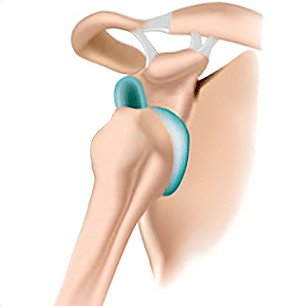What is a Dislocated Shoulder?
 When a shoulder dislocation occurs it is when the upper arm bone pops out of the cup-shaped socket. This socket is apart of the shoulder blade. The shoulder is the most mobile joint. Therefore, a dislocated shoulder is more likely to occur.
When a shoulder dislocation occurs it is when the upper arm bone pops out of the cup-shaped socket. This socket is apart of the shoulder blade. The shoulder is the most mobile joint. Therefore, a dislocated shoulder is more likely to occur.
If you or someone you know suspects a shoulder dislocation, seek immediate medical attention. It’s common for someone to regain total shoulder motion within the first few weeks. In fact, once a shoulder dislocation has occurred, you are more susceptible to dislocation reoccurrence.
There are many different symptoms that you may experience when your shoulder becomes dislocated. Sometimes, you may even experience weakness, numbness, or tingling.
Symptoms of Shoulder Dislocation
When a dislocated shoulder occurs, the most common signs are as follows:
- Swelling
- Bruising
- Visibly deformed
- Intense shoulder pain
- Unable to move the joint
Sometimes, shoulder dislocation can also cause weakness, numbness, or tingling. This typically will occur near the injury site.
When Should I See a Doctor for a Dislocated Shoulder
If you are experiencing a shoulder that appears to be dislocated, seek immediate medical attention. However, while you wait for medical attention, make sure to do the following:
- Do not move the joint. Splint or sling it in its current position. Do not try to move it. This could further damage the shoulder.
- Ice the Injury. Applying ice to the injured area is a good idea. Therefore, this will reduce pain and swelling by controlling internal bleeding around the shoulder.
Causes of a Shoulder Dislocation
Your shoulders are the most dislocated joint in the body. In fact, it moves in many different directions. Your shoulder can dislocate forward, downward, backward, fully, or partially. However, most dislocations occur through the front of the shoulder.
A strong force, such as a sudden blow to your shoulder will pull the bones out of place. In fact, extreme rotation of your shoulder joint can pop the ball of your upper arm bone out of your shoulder socket. Partial dislocation can occur when your upper arm bone is partially in and partially out of your shoulder socket.
A dislocated can be caused by the following:
- Trauma, not sports-related. A hard blow to your shoulder during a motor vehicle accident is a common source of dislocation.
- Sports injuries. Shoulder dislocation is a common injury in contact sports, such as football and hockey, and in sports that may involve falls, such as downhill skiing, gymnastics, and volleyball.
- Falls. You may dislocate your shoulder during a fall, such as from a ladder or from tripping.
Treatment for a Dislocated Shoulder
There are a few different treatments available for shoulder dislocation, such as:
Immobilization. Prescribing a splint or a sling for a few days to a few weeks is common with a dislocated shoulder. However, depending on the severity of the discoloration will also determine how long your shoulder will be immobilized.
Medication. A pain reliever may be prescribed to keep you comfortable while your injury heals.
Physical therapy. After your shoulder splint or sling is removed, you’ll begin a gradual rehabilitation program designed to restore range of motion, strength, and stability to your shoulder joint.
Closed reduction. Some doctors prefer gentle movement to help the shoulder bones back into position. However, depending on the pain level, you may require medication prior. Severe pain should subside once your shoulder is put back into place.
Surgery. Surgical options may be necessary if you have weak shoulder ligaments or joints. Or, if you tend to have reoccurring shoulder dislocations no matter the strengthening that is done. However, some cases might require surgery if nerve or blood vessels are damaged.
If you suspect a shoulder dislocation call us at 888-409-8006. Our offices have many shoulder specialists who are here to help!
